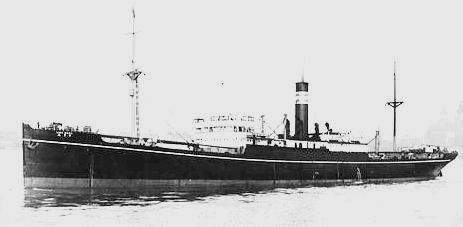
Tabular Record of Movement

© 2013-2016 Bob Hackett
24 October 1919:
Nagasaki. Laid down at Mitsubishi Zosen, as Yard No. 334, a 7,250-ton passenger cargo ship for Nippon Yusen Kaisha (NYK), K. K. (Japan Mail Steamship Co.).
25 March 1920:
Launched and named LIMA MARU.
25 April 1920:
Completed and placed in NYK's service until the outbreak of the Pacific War.
3 August 1920:
LIMA MARU arrives at Ellis Island, New York from Yokohama.
7 July 1937: The Marco Polo Bridge Incident ("First China Incident"):
Hun River, Lukuokiao, China. Imperial Japanese Army (IJA) troops on night maneuvers at the Marco Polo Bridge fire blank cartridges. Chinese troops across the river think they are under attack. They fire live rounds back, but do not cause injuries. At morning roll call, the Japanese discover a soldier missing and assume the Chinese have captured him. The Japanese demand entry to the Peiping (Beijing) suburb of Wanping to look for the soldier, but the Chinese refuse. The Japanese then shell the city. An undeclared war on China begins.
1 September 1937:
Requisitioned by the Imperial Army (IJA) and assigned IJA No. 332.
30 March 1938:
Released back to her owners.
24 June 1938:
Re-requisitioned by the IJA.
16 January 1939:
Released back to her owners.
13 September 1941:
Re-requisitioned by the IJA.
18 December 1941: The Invasion of the Philippines -“M” Operation (M Sakusen):
At 1200, LIMA MARU departs Mako, Pescadores for Lingayen Gulf, Philippines in Rear Admiral (later Vice Admiral) Rear Admiral Nishimura Shoji's (39)(former CO of HARUNA) 2nd Lingayen Invasion Unit with 27 other IJA transports escorted by DesRon 2's light cruiser NAKA, DesDiv 9's ASAGUMO, MINEGUMO, NATSUGUMO, minesweepers W-9, W-10, W-11, W-12, W-17 and W-18 and subchasers CH-4, CH-5, CH-6, CH-10, CH-11, CH-12, CH-16 , CH-17 and CH-18.
The Japanese main invasion at Lingayen Gulf consists of three transport echelons and carries the main part of LtGen Homma Masaharu's 80,000-man 14th Army. The first echelon is composed of 27 transports from Takao under Rear Admiral Hara , the second echelon of 28 transports under Rear Admiral Nishimura carrying the 7th Tank Regiment and an infantry regiment of the 48th Infantry Division and the third echelon of 21 transports from Keelung under Rear Admiral (later Vice Admiral) Hirose Sueto (39).
24 December 1941:
LIMA MARU and Rear Admiral Nishimura's 2nd Lingayen Invasion Unit arrive at Lingayen Gulf between 0110 and 0430. At 0530, LtGen Dobashi's 2nd Lingayen Invasion Unit begins landing troops.
9 February 1942: Operation "L" - The Invasion of Palembang:
LIMA MARU departs Camranh Bay for Palembang in the Bangka-Palembang, Sumatra invasion invasion convoy consisting of ARGUN, BUYO, FUSO, GINYO, INABASAN, HIROKAWA, KENZUI, MACASSAR, MEIGEN, RAKUYO, SHINSEI, SINGAPORE (later renamed SHONAN) and TSUSHIMA MARUS and supply ship NOJIMA escorted by light (training ) cruiser KASHII (F), DesDiv 20's ASAGIRI and YUGIRI, kaibokan SHIMUSHU, minelayer HATSUTAKA, mineweeper W-6 and subchaser CH-9.
16 February 1942:
The transports land troops near Palembang, Sumatra, Netherlands East Indies (now Indonesia).
14 February 1942:
Six Bristol "Blenheim" light bombers of Royal Air Force No. 211 Squadron attack the convoy and sink transport INABASAN MARU and damage several others.
21 September 1942:
LIMA MARU departs Manila for Takao, Formosa. She is carrying about 2,000 IJA troops and 300 American prisoners-of-war (POW). Eight POWs die en route. [1]
4 October 1942:
Arrives at Takao. The next day, the POWs are disembarked.
14 November 1942:
LIMA MARU departs Moji for Rabaul carrying the 36th Division's 4th Engineer Headquarters Command.
15 November 1942:
Arrives and departs Saeki in Military Movement No. 8’s “B” convoy also consisting of MIYAURA MARU escorted by subchasers CH-37 and CH-39.
E 16 November 1942:
The escorts are detached at 29N.
29 November 1942:
Arrives at Rabaul.
12 October 1943:
LIMA MARU departs Manila in convoy "D" also consisting of ASAKA and HOFUKU MARUs escorted by kaibokan WAKIMIYA.
20 October 1943:
Arrives at Singapore.
24 November 1943:
LIMA MARU departs Moji for Rabaul carrying the 36th Division's 4th Engineer Headquarters staff.
29 November 1943:
Arrives at Rabaul.
7 February 1944:
At 1230, LIMA MARU departs Moji for Takao in convoy MOTA-02 also consisting of FUJIKAWA, FUYO, HINKAI, NANREI, OYO, RAKUYO, SHIRANESAN, TAIKEI, TESHIO, TOSHIN and UCHIDE MARUs, TOYO MARU No. 3 and KYOEI MARU No. 5 escorted by torpedo boat SAGI.
8 February 1944:
At 0720, patrol boat PB-38 departs Sasebo and joins the escort of convoy MOTA-02.
W coast of Kyushu, At about 2200, Cdr (later Rear Admiral) Charles O. Triebel's (USNA '29) USS SNOOK (SS-279) torpedoes and damages IJA cargo ship SHIRANESAN MARU. 135 men are KIA. She is detached for Sasebo escorted by torpedo boat SAGI.
30 miles SE of Goto Archipelago. SNOOK also torpedoes LIMA MARU. Hit by three torpedoes, she sinks at 31-05N, 127-37E. 2,765 troops, four civilians, 9 gunners and 56 crewmen are KIA, many succumb to the frigid water. SNOOK survives depth-charging.
9 February 1944:
USN codebreakers at Fleet Radio Unit, Melbourne, Australia (FRUMEL) intercept and decode a message sent at 0220 that reads "LIMA MARU exploded and sank after being hit twice at 2245 on 8th in 31-05N, 129---E. Patrol Boat 38 and No. 5 HYOEI (KYOEI) MARU are picking up survivors and keeping the submarine down. Remainder of convoy taking refuge at Kagoshima. "
Author’s Note:
[1] LIMA MARU was considered a "Hell Ship" by the POWs.
Thanks go to Erich Muehlthaler of Germany.
Bob Hackett

